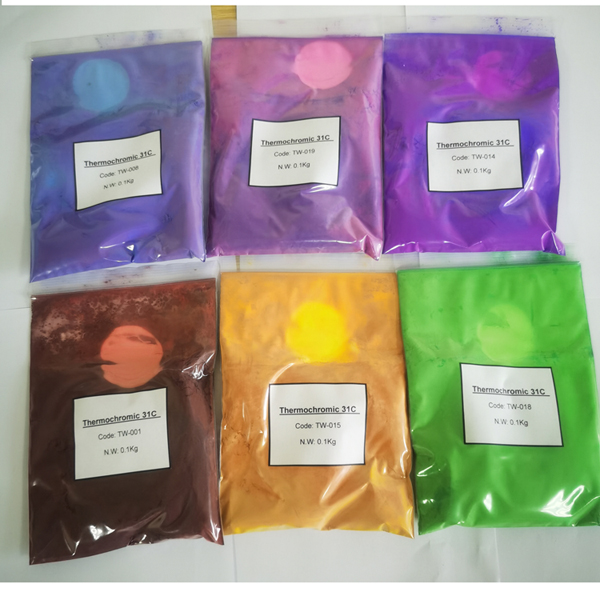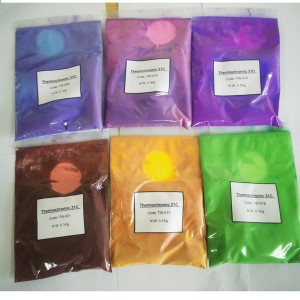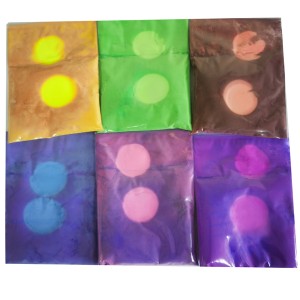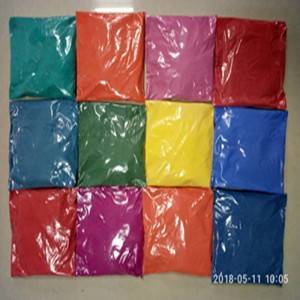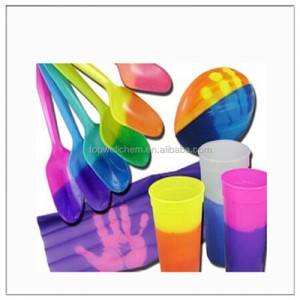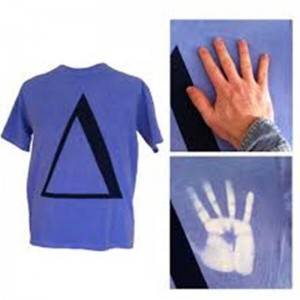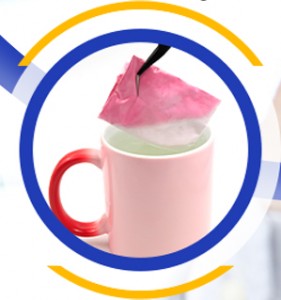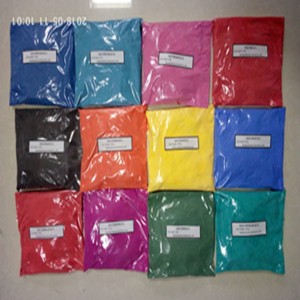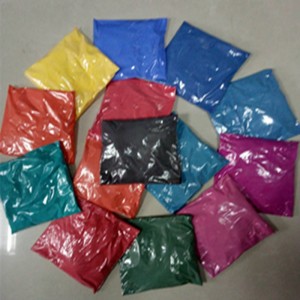high temperature color to colorless thermochromic pigment for paint
Themochromic pigments are composed of micro-capsules that change color reversibly. When the temperature is raised to 45 degree celsius, the pigment goes from one color to another color, for example black to orange… The color returns to black when temperature is cooled down.
Thermochromic pigment can be used for all types of surfaces and mediums such as paint, clay, plastics, inks, ceramics, fabric, paper, synthetic film, glass, cosmetic color, nail polish, lipstick, etc. Application for offset ink, security offset ink, Screen printing application, marketing, decoration, advertising purposes, plastic toys and smart textiles or whatever your imagination takes you.
Processing temperature
The processing temperature should be controlled below 200 ℃, the maximum should not exceed 230 ℃, heating time and minimize material. (High temperature, prolonged heating will damage the color properties of the pigment).
High-Quality Thermochromic Pigment for Industrial Applications
1、Plastics and Rubber Products
Daily Plastic Products
Suitable for injection molding and extrusion forming of transparent or translucent materials such as polypropylene (PP), ABS, PVC, and silicone. The addition amount is generally 0.4%-3.0% of the total plastic volume, commonly used in products like children’s toys, plastic soft spoons, and makeup sponges. For example, temperature-sensitive spoons change color when contacting hot food, indicating whether the food temperature is suitable.
Industrial Components
Used for casting or compression molding of materials such as epoxy resin and nylon monomers to manufacture industrial parts requiring temperature warning, such as radiator housings and electronic device accessories. Color indication in high-temperature areas warns of overheating risks.
2、Textiles and Apparel
Functional Apparel
Thermochromic pigments are applied to clothing through processes like printing and dyeing, enabling the apparel to change color according to body temperature or environmental temperature, enhancing (fun) and fashion sense. Examples include T-shirts, sweatshirts, and skirts with color-changing effects.
Fashion Design and Accessories
Used for color-changing scarves, shoes, and hats. Applying thermochromic pigments on the surface makes them present different colors under varying temperatures, adding unique visual effects to shoes, meeting consumers’ demand for personalized footwear, and enhancing product (fun).
3、Printing and Packaging
Anti-counterfeiting Labels
Thermochromic inks are used for product labels, tickets, etc. For anti-counterfeiting logos of e-cigarettes and high-value commodities, thermochromic pigments can be used to make anti-counterfeiting labels, verifying product authenticity through temperature changes. Thermochromic powders with different formulas have different color-changing temperatures, which are difficult for counterfeiters to replicate accurately, thus improving anti-counterfeiting reliability.
Smart Packaging
Applied in food and beverage packaging:
- Cold drink cups: Display a specific color below 10°C to indicate the refrigerated state;
- Hot drink cups: Change color above 45°C to warn of high temperatures and avoid scalding.
4、Consumer Electronics
- E-cigarette Casings
- Brands like ELF BAR and LOST MARY use temperature-sensitive coatings that dynamically change color with usage time (temperature rise), enhancing visual technology sense and user experience.
- Temperature Control Indication for Electronic Devices
- Thermochromic pigments are used on the casings of electronic devices (e.g., phone cases, tablet cases, earphone cases), enabling them to change color according to the device’s usage or environmental temperature, bringing a more personalized user experience. Color indication in high-temperature areas intuitively warns of overheating risks.
5、Beauty and Personal Care Products
Nail Polish
Adding thermochromic pigments triggers color changes from colorless to peach or gold, achieving “thousands of colors for thousands of people”.
Fever-Reducing Patches and Body Temperature Indication
Patches change color as body temperature rises (e.g., above 38°C), intuitively reflecting cooling effects or fever status.
6、Anti-counterfeiting and Temperature Control Indication
Industrial and Safety Fields
- Temperature Indication: Used to make temperature indicators on industrial equipment, visually displaying the equipment’s operating temperature through color changes, facilitating staff to timely understand its working status and ensure normal operation.
- Safety Signs: Making safety warning signs, such as setting thermochromic safety signs around fire-fighting equipment, electrical equipment, chemical equipment, etc. When the temperature rises abnormally, the sign color changes to remind people to pay attention to safety, playing a role in early warning and protection.
-
Usage Limitations and Precautions
- Environmental Tolerance: Prolonged exposure to UV rays will cause fading, suitable for indoor use;
- Temperature Limits: Processing temperature should be ≤230°C/10 minutes, and long-term operating temperature ≤75°C.
The core value of thermochromic pigments lies in dynamic interactivity and functional indication, with significant potential in the future for smart wearables, biomedical fields (e.g., bandage temperature monitoring), and IoT packaging
Write your message here and send it to us







